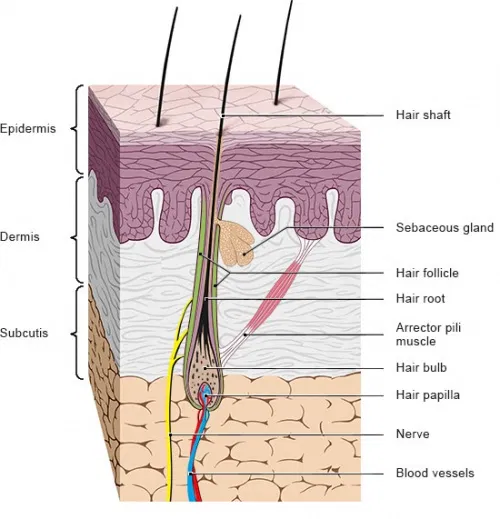Related Blogs
We all dread seeing those locks of hair in a comb or hairbrush. Hair fall is something that a lot of people go through as they age. In the world of beauty, hair has always been like a personal crown, a symbol of charm that we wear every day. It’s not just about looking good; it’s about feeling good too – having shiny, healthy hair has always been seen as a symbol of beauty, reflecting cultural ideals and individual style. Taking care of your hair isn’t just about looks; it’s a way to show yourself some love.
This simple act of grooming isn’t superficial – it is a powerful boost for your confidence and happiness. When you feel good about your hair, you carry that positivity into your daily life, impacting how you see yourself and how others see you. In our connected world, where appearances matter, nurturing your hair becomes a meaningful ritual. Due to this, there is always a demand for an effective hair loss treatment. In order to understand what makes for a potent hair loss treatment, it is first essential to understand the structure of the hair. Knowing the basics serves as a guide when exploring ways to address hair loss. So, to begin the journey toward restoring both hair health and confidence, it’s essential to grasp your hair’s composition.
The basic formation of hair
Macronutrients are the fundamental components that allow plants to perform their most essential functions. Macronutrients are divided into two categories – primary and secondary nutrients.
- Primary macronutrients are nitrogen (N), phosphorus (P), and potassium (K). Nitrogen is vital for leaf growth and chlorophyll production for photosynthesis. Phosphorus aids root development, flowering, and fruit/seed formation. Potassium regulates water balance, strengthens cell walls, and boosts disease resistance.
- Secondary macronutrients include calcium (Ca), magnesium (Mg), and sulphur (S). Calcium is critical for cell wall structure and membrane permeability. Magnesium is the central atom of the chlorophyll molecule, enabling photosynthesis. Sulphur is a constituent of several plant proteins and vitamins.
When any of these essential macronutrients are lacking, it can have serious consequences for plant health. Nitrogen deficiency causes stunted growth and yellowing leaves. Phosphorus deficiency leads to poor root systems, delayed flowering, and smaller fruit. Potassium deficiency makes plants more prone to drought, pests, and diseases. Providing the right balance of macronutrients is crucial for ensuring plants can thrive and fulfil their roles in the ecosystem. Careful monitoring and targeted fertilisation are key to maintaining optimal macronutrient levels.

Image Courtesy: NCBI
Difference between hair fall and hair breakage
Before discussing the major causes of hair loss, it is important to understand the difference between two terms used in similar contexts: hair fall and hair breakage.
Hair breakage occurs when your hair breaks from the shaft leading to split ends and shorter hair strands. It occurs when the overlapping scales in your hair’s inner cuticle fall apart, leading to hair damage.
On the other end, hair fall occurs due to the root or follicle becoming weak and falling off.
Hair breakage occurs due to the brittleness of the strands of hair and hair fall occurs due to the weakening of the hair root. With proper care and help from products suitable for your hair, you can control the effects of both these kinds of hair loss. While hair breakage can be treated by adding moisture back to your hair, hair fall requires a more vigorous hair care routine and a relook at various other factors including your daily nutrition. Both kinds of hair loss: hair breakage and hair fall occur due to various reasons related to your lifestyle, surroundings and genetics.
Major causes of hair loss
About NICHEM
Long-standing Specialty Chemicals player with ISO 9001:2015 certification and a history of providing specialty solutions for over 25 years. The company is headed by senior chemical industry specialists with the combined expertise of more than 100 years. With an emphasis on eco-friendly, non-toxic products, the company’s primary strength is research, development, and customisation. More information on NICHEM can be found at https://nichem.solutions.


